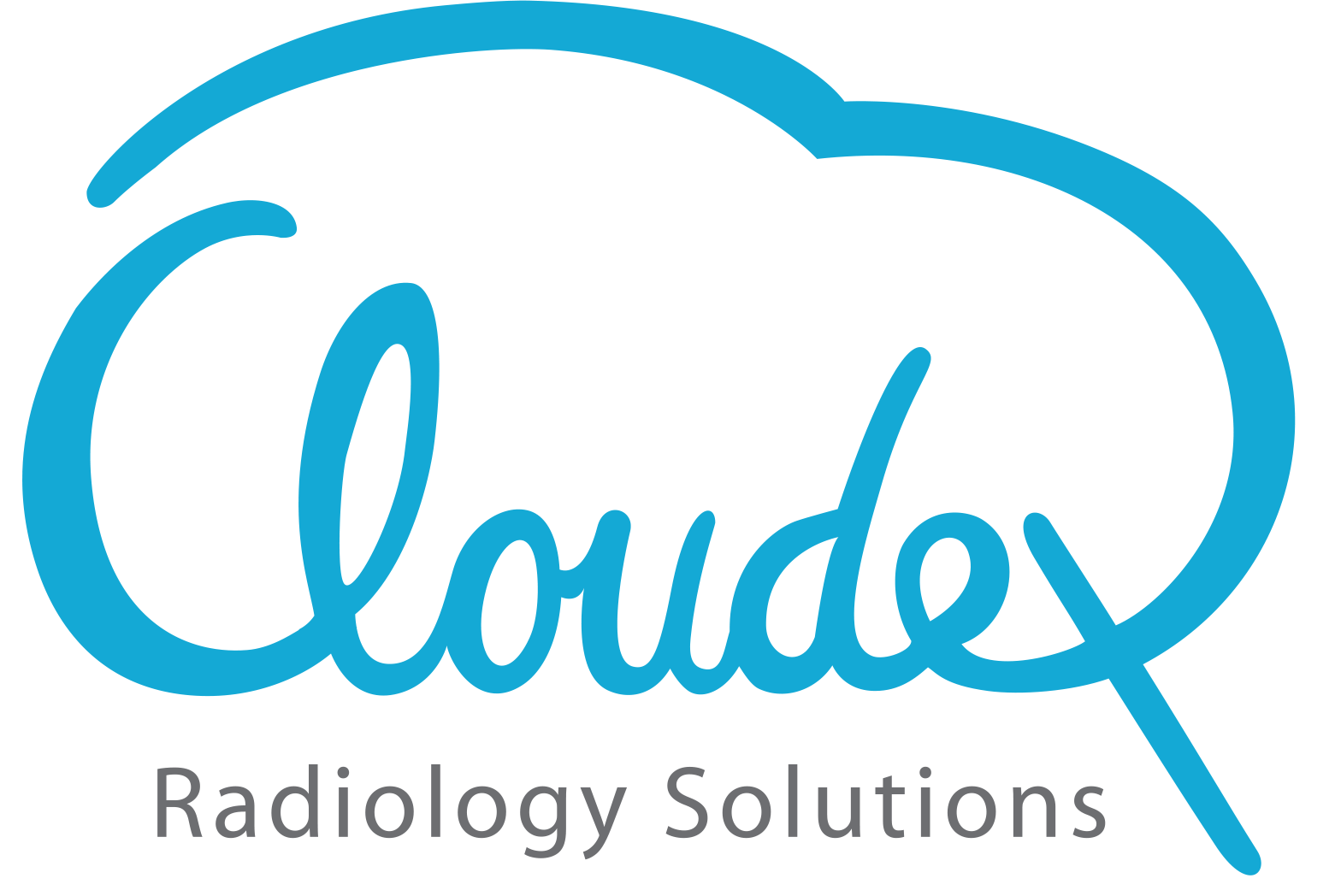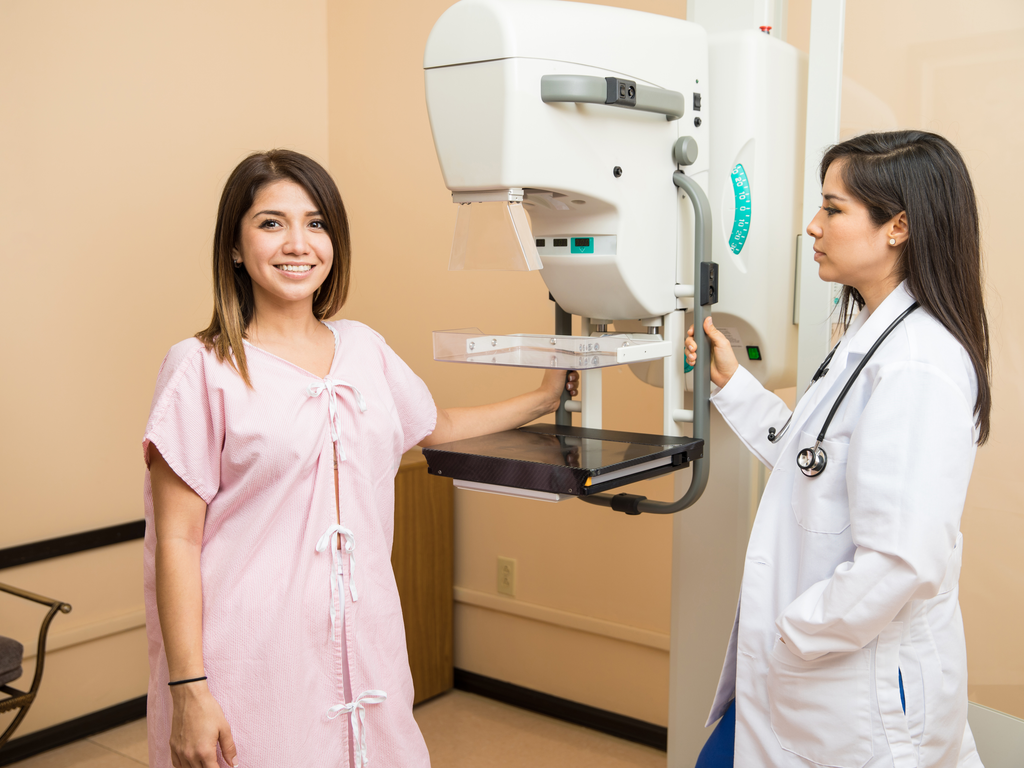Mammography is an X-Ray of the breasts carried out on a machine dedicated to it because the breast is not of uniform thickness and requires a dedicated unit. It is conical in shape, narrow in the region of the nipple. The tissues need to be flattened to separate them & achieve better visualization. Moreover, the breast moves with respiration and needs to be fixed. Hence, compression is applied to the breast resulting in a little bit of discomfort for few seconds. The compression results in the reduced thickness of the breast and the radiation to the breast are decreased. The benefits of mammography far outweigh the slight discomfort.
When mammography is carried out on an individual without any symptoms, it is called screening mammography whereas if carried out on an individual with symptoms, it is called diagnostic mammography in which additional views have to be carried out.
With the advancement in technology and the world going digital, mammography machines are now digital. Hence, mammograms carried out anywhere can now be viewed by expert breast radiologists in any part of the world thanks to teleradiology. The scans can be viewed & reviewed very easily & comfortably from anywhere, which is a huge benefit. Considering the lockdowns during Covid times where one couldn’t travel, this makes it so comforting for patients to get their mammography at a local setup and get an expert from any part of the world to give an opinion on it. It saves a lot of time, money & effort.
Breast cancer like many other cancers is a silent painless disease and by the time it becomes a palpable lump, it is fairly large in size. Early detection leads to a reduction in morbidity & mortality and more options of treatment. Hence, screening mammography is important as it can detect cancer before it becomes palpable.
At times there is no mass palpable and microcalcification is the only sign of malignancy. Screening helps to detect cancers when they are too small to be palpable as well as the ductal carcinoma in situ. Microcalcifications, the hallmark of breast cancer are detected only on mammography.
Screening protocols vary from country to country depending on the incidence of breast cancer.
In India, for the general population, the protocol is as follows:-
- Once between 35-40 years of age. If the breast is dense on the mammogram, an ultrasound must also be carried out.
2. Age 40-50 Once in 2 years
3. Age > 50 Once in 18 months -2 years if the breast is fatty and annually if dense.
Screening is continued usually till 75 years or till the time, there is the likelihood of life expectancy of 10 or more years.
However, for the high-risk group, screening is more aggressive. Depending on the risk, at times MRI breast is started annually starting at 25 years and mammography at 35.
In the case of 1st-degree relatives of those with premenopausal breast cancer, Screening is started 10 years earlier than the age at which the relative was diagnosed.
For women in the reproduction age group, screening is best done in the immediate postmenstrual phase when the breast is softest and there is no likelihood of pregnancy. Ideally, no talc/ deodorant should be used prior to the test to avoid artifacts. A two-piece dress is ideal for the test which takes less than 10 minutes. Two views, craniocaudal & mediolateral of each breast are carried out which results in global imaging including the axillae. With the new full-field digital mammography machines with tomosynthesis, the information from mammograms is way more than the older machines.
High-risk individuals:
There are risk factors that one can’t change-:-
1. Getting older.-most breast cancers diagnosed after age 50. With advancing age immunity decreases.
2. Low immunity includes diabetes, autoimmune disorders, patients on immunosuppressants & chemotherapy
3. Inherited gene mutations, such as BRCA1 and BRCA2.
4. Early menarche before age 12 and late menopause post 55 results in prolonged exposure to hormones and increased risk
5. Dense breasts are a risk factor & also result in difficulty in the detection of abnormalities on a mammogram.
6. Prior history of breast cancer or certain non-cancerous breast diseases like atypical hyperplasia or lobular carcinoma in situ.
7. Family history of breast or ovarian cancer. Risk is high if a first-degree relative or multiple maternal/ paternal family members with breast or ovarian cancer. A first-degree male relative with breast cancer also raises a woman’s risk.
8. Prior H/O radiation therapy to the chest or breasts ( say for Hodgkin’s lymphoma) before age 30.
9. Diethylstilbestrol (DES), given to prevent miscarriage raises the risk for the woman & her daughters.
10. Pollution & adulteration
Risk Factors one Can Change:-
- Sedentary existence
2. Obesity with increased abdominal circumference.
3. Hormone replacement therapy & oral contraceptives
4. Having the first pregnancy after age 30, not breastfeeding, and not having borne children raises the drink
5. Smoking & drinking.
6. Stress- combat it through yoga, exercise, and meditation.
Have you got your screening mammography done? If eligible for it and you haven’t got it done, PLEASE DO IT NOW.
Author:
Dr.Padmavati Dua
Erstwhile Senior Consultant
Diwan Chand Aggarwal Imaging Centre, New Delhi
Yashoda Hospital, Kaushambi, Ghaziabad
Col. Pant’s Imaging Centre, Green Park, New Delhi

